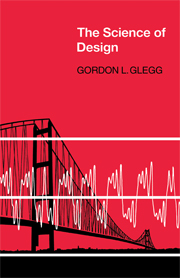Book contents
- Frontmatter
- Contents
- Preface
- 1 The Overall Picture — Plan View
- 2 The Overall Picture — Elevation
- 3 Special Cases
- 4 A Rogue of Variables
- 5 Journeys into Lilliput
- 6 Transformations and Translations
- 7 The Dictatorship of Time
- 8 Looking, Seeing and Believing
- 9 The Consortium
- 10 The Art of Conversation
- 11 Conclusions and Recommendations
- References and Notes
- Index
10 - The Art of Conversation
Published online by Cambridge University Press: 04 August 2010
- Frontmatter
- Contents
- Preface
- 1 The Overall Picture — Plan View
- 2 The Overall Picture — Elevation
- 3 Special Cases
- 4 A Rogue of Variables
- 5 Journeys into Lilliput
- 6 Transformations and Translations
- 7 The Dictatorship of Time
- 8 Looking, Seeing and Believing
- 9 The Consortium
- 10 The Art of Conversation
- 11 Conclusions and Recommendations
- References and Notes
- Index
Summary
In the last chapter we saw how instrumentation can not only provide a blast off from the concrete into the abstract but provide a second stage as well. This leads us to consider if it would be possible to mechanize, by some comprehensive instrument, all the stages of the abstract and so achieve a splash down on the design level of reality.
Assuming this was possible (and we do not yet know if it is), our research would be greatly simplified in one way but made more difficult in another. It would be simplified in that all we need do is to alter one thing at a time and our hypothetical instrument will then do all the work for us and register the total effect of the modification. The difficulty would be that we would have little or no idea of why it happened. By mechanizing the abstract we would have concealed it. The device would answer the questions beginning with ‘what’ but never those beginning with ‘why’. It would tell us if a thing worked but not how it worked. But, provided we only asked one thing at a time we would not need to know any abstract explanation. We would live on the concrete and keep our heads out of the clouds.
But can such total instrumentation exist? Yes, and in two forms. The first and simplest way of making an instrument duplicate a total machine is to make the total machine itself the instrument.
- Type
- Chapter
- Information
- The Science of Design , pp. 83 - 87Publisher: Cambridge University PressPrint publication year: 1973



